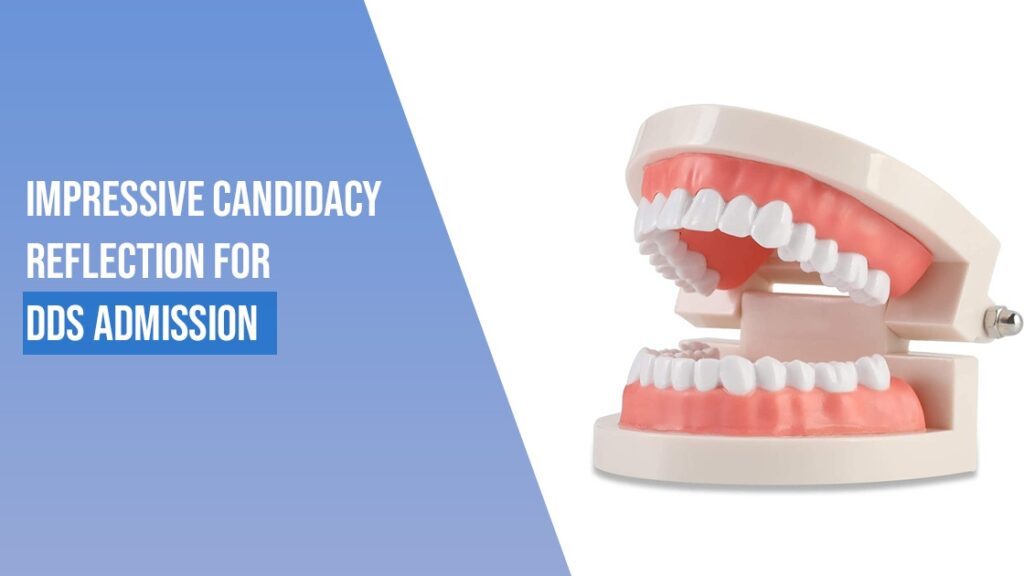Introduction
Imagine that your personal statement is a dish you are preparing for a culinary competition. You want to create a dish that is both delicious as well as aesthetically and visually appealing.
The CAAPID personal statement is like a classic dish, such as a chocolate chip cookie. It is something that everyone knows and loves. But, you still want to put your own personal spin on it and make it your own, customizing aspects of it to fit in with the true essence of you.
The PASS personal statement on the other hand, is more like a signature dish. It is something that is unique and exclusive to you and is one that perfectly showcases your skills and aptitude for a specific aspect, well-curated to appeal to that aspect/specialty, in this case.
Regardless of the dish you prepare, it must be well-seasoned with a clear flavor profile. Similarly, your personal statement should be well-written and engaging; it should communicate why you are a good fit for the school or residency program you are applying to.
CAAPID and PASS
The Centralized Application Service for Advanced Placement in Dentistry (CAAPID) and the Postdoctoral Application Support Service (PASS) are two different application services used by dental schools and residency programs in the United States and Canada.
CAAPID is a centralized application service that allows applicants to submit a single application to multiple dental schools. PASS is a similar service for residency programs.
Why do dental school and residency applicants need to write personal statements?
Personal statements are an important part of the dental school and residency application process. They provide an opportunity for applicants to tell their story and explain why they are interested in the specific program to which they are applying. This is a crucial part in one’s application, it is one of the only documents that strikes a personal chord. Unlike your transcripts and CV, a personal statement allows the admissions committee a peak into not just your dental journey but a clear understanding of who you are as a dentist and person. This is your opportunity to showcase your skills, strengths, and most importantly, the essence of who you are.
Key differences between CAAPID and PASS Personal Statements
CAAPID and PASS personal statements stem from the same foundation, that is -your opportunity to showcase your skills, strengths, and most importantly, the essence of who you are. However, they differ in a few aspects that we like to call “The Four C’s”-
- Character Count
- Content
- Customization
- Creativity

S.No. | Characteristics | CAAPID Personal Statement | PASS Personal Statement |
Character Count | 5200 characters | No character limit | |
2. | Content | Generic focus – why dentistry, why US, your experiences and ambitions | Specific focus – why this specialty, how you are a good fit, your experiences and aspirations |
3. | Customization | One cannot customize their CAAPID statement. You can upload one common Statement that is visible to all the CAAPID participant schools | One can customise their statement for every school that you are applying to, and for each specialty that you want to apply to. |
4. | Creativity | CAAPID statements have no limit to your creativity. You can fly free with analogies and creative comparisons that you feel truly reflect you as a person and as a dentist. | While creativity is not prohibited in a PASS statement, it is ideally best written with a focus on the specialty to which you are applying. |
Let us take a look at these points in a little more detail to truly understand what each one entails.
Character Count
CAAPID –
CAAPID statements mandate a 5200 character limit. While it does seem like a daunting task to encapsulate your life in 5200 characters, what helps is setting a definitive structure in mind. Decide the aspects, experiences, and categories of your life you want to showcase and allocate them to a roughly watertight structure before you commence the writing process. This ensures that you do justice to every aspect that you want to talk about, without running out of character count.
A CAAPID personal statement is generic but should convince the reader of your suitability not just as a dentist but also as a person. From personal experiences, to your dental journey, to patient instances, it can and should include any and all fragments that make you, you.
There is no blueprint or rulebook for writing the perfect CAAPID statement-recounting past experiences to talking about your goals in the future, the canvas is yours to paint with vibrant colors and an honest expression of you.
PASS –
PASS statements on the other hand are a writer’s desire- free and liberated expression devoid of a character limit. Applicants have more freedom to portray their background, strengths, weaknesses, and goals. However, this no-character-limit concept can also be a double-edged sword. Statements that run into 3 pages or 9,000 characters are a hard no. It is pertinent to factor in that one must keep the reader engaged, and anything more than about 6000 characters makes that difficult. A statement extremely short and brief does not engage enough, while a long winding statement become a boring monologue. Find the sweet spot in between by recounting experiences that stand out in your personal and professional life while showcasing your qualities.
Content
CAAPID –
CAAPID statements tend to be generic in terms of content, showcasing the essence of who you are as a person and a dentist. The goal here, is to engage the reader with your life story in an authentic manner. I know this sounds overwhelming but with our pointers, this shouldn’t be as overwhelming as it sounds. Spend some time evaluating what bits of your life showcase your inclination towards and fit into dentistry – then integrating them would be like stringing beads together to form a necklace. A good statement should ideally provide answers to the following questions – who are you as a human, why you chose dentistry, what is your niche as a dentist, why do you want to pursue dentistry in the US now, what advantages can you bring to the cohort, and what your future aspirations are. It need not focus on a particular area or specialty.
PASS –
PASS statements focus on the specific specialty you are applying to. Like a CAAPID statement, you will evaluate which bits of your personal and professional life showcase your competence, however, this will be more tailor-made to the specialty of your choice. For instance, if it’s Prosthodontics that you are applying to, the Statement should highlight your ability to fabricate and construct, your dexterity your collaborative abilities, even your creativity, etc. For a Paediatrics PASS statement, you would write about instances in your life that perhaps paint a picture of your congeniality, how good you are with children, etc.
Aside from the area/specialty taking center stage of your statement, you could also talk about your future aspirations and your expectations from the particular program you are applying to. Ensure your statement answers crucial questions such as- why that particular residency, why you are a ideal candidate for it, and let that flow into your goals within that field. For example, in a Prosthodontics statement you might highlight upcoming advancements in TMJ disorders, among others.
Thus, the difference between the content in a CAAPID and PASS statement is the amount of focus you need to bring out in the residency you are applying for in PASS. The common theme, however, is that both statements aim at showing the admissions committee how you are the best fit as a person and dentist.
Customization
A customized statement is tailor-made exclusively targeting a specific school’s program.
CAAPID-
As a CAAPID applicant, unfortunately, you cannot customize your statements. CAAPID statements follow a One Portal, One Statement formula. You can upload one common Statement that is visible to all the CAAPID participant schools, whether it is NYU or Nebraska. However, some schools like Colorado or UMN do require a customized statement, for which you then have the liberty to customize or reorient your CAAPID statement according to the specific school.
PASS –
The distinct feature or advantage of a PASS Statement is that it can be customized for every school that you are applying to, and for each specialty that you want to apply to.
For instance, if you want to apply to AEGD and Endodontics residency programs in both UCSF and UCLA, you can afford to upload 4 separate statements for these 4 different requirements – a statement each for UCSF and UCLA, focusing on why that school, separate statements for AEGD and Endodontics, stating how you are a good fit for that particular residency.
For this, a basic statement, even a tweaked CAAPID statement, could serve well to showcase your fit for AEGD, with an added focus on the school you are applying to which will change according to whether it’s UCSF or UCLA. For Endodontics, you could then recycle your AEGD statement and reorient it to showcase skills that would highlight your flair and competence for endodontics
Creativity
CAAPID –
Creativity is seemingly synonymous with a CAAPID statement. There is no limit to your creativity. You can fly and and wide with analogies and creative comparisons that you feel truly reflect you as a person and as a dentist. From profound quotes, to childhood cartoon influences, to themes like sailing or marathons, the world of creativity is your oyster. You can use it to accessorize your statement as long as the star of the show remains your statement- highlighting your skills and pertinent points.
PASS –
A PASS statement need not be monotonous and dry. Creativity is most definitely welcome in a PASS statement, but the catch here, is that the spotlight must remain bright and shining on the content. Outline your strengths, list out your aspirations, and highlight your takeaways from that particular PASS program. The goal is to portray why you are a good fit for that particular school and more importantly, that particular specialty. With that as the central point, you can feel free to sprinkle your statement with bits of creativity.
Tips for writing a strong CAAPID or PASS personal statement
- Be honest and authentic. The admissions committees want to get to know the real you.
- Be specific. Don’t just tell the admissions committees that you are passionate about dentistry or that you are interested in the specific residency program to which you are applying. Show them.
- Be concise. The admissions committees have a lot of applications to read, so make sure your personal statement is to the point.
- Proofread carefully. Typos and grammatical errors will make a bad impression on the admissions committees.
Here are detailed videos that encapsulate the process of writing a statement and the difference between writing a CAAPID and PASS Personal Statement-

Conclusion
The CAAPID and PASS personal statements are like sculpting tools. They help you to chip away at the excess material and shape your story into a masterpiece.
While the CAAPID personal statement is a general tool you use to shape your story into any form that you desire, the PASS personal statement is a more specific tool. It is designed to shape your story into a specific form: a fit for the residency program to which you are applying.
Use the CAAPID and PASS personal statements to sculpt your masterpiece. Be honest, be specific, and be creative. The admissions committees are eager to see what you create.



